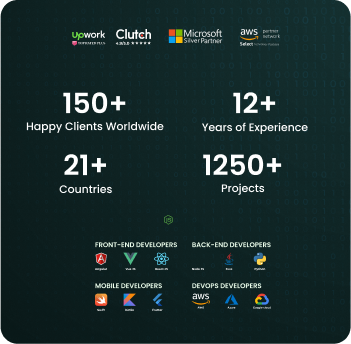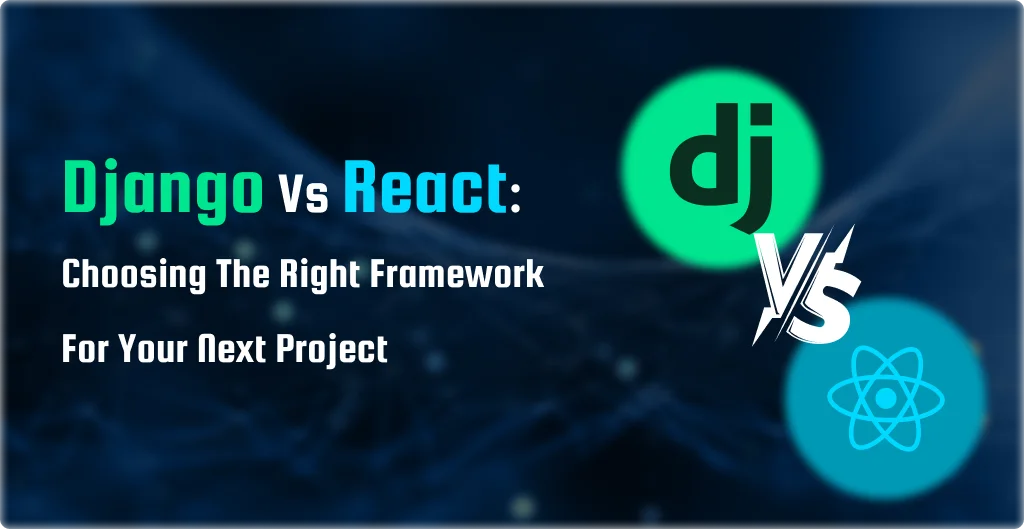Table of Contents
Have you been thinking about bringing some extra tech talent on board, but not sure whether to outsource entire projects or just augment your existing staff? As a business owner, these types of decisions can be tough to make, especially when Budgets are tight and you need results fast. The good news is, that whether you choose IT outsourcing vs IT staff augmentation, you have options to scale your tech team and advance your business goals.
Before you make the call, let’s Break down the key differences Between outsourcing and IT staff augmentation services so you can determine the best approach for your unique needs. At the end of the day, you want a solution that sets your business up for growth and success. With the right strategy and IT partner, you can gain access to in-demand skills without the costs and commitments of full-time hiring.
You may think that IT outsourcing and IT staff augmentation are similar, but they’re not. It’s important to understand the differences between them when determining which option is best for your project. In this article, you will learn about IT staff augmentation and IT outsourcing services, as well as their differences. Let me get you a clear idea of these too and you can hire them for your project based on the requirements.
What is IT Staff Augmentation?
IT staff augmentation services provide short-term or long-term dedicated developers on contract to supplement your in-house staff. Companies hire augmented staff to fill skills gaps, get extra help for short-term projects, or temporarily replace employees in the company.
Pros & Cons of IT Staff Augmentation Services
IT staff augmentation services provide short-term or long-term dedicated developers on contract to supplement your in-house staff. Companies hire augmented staff to fill skills gaps, get extra help for short-term projects, or temporarily replace employees in the company.
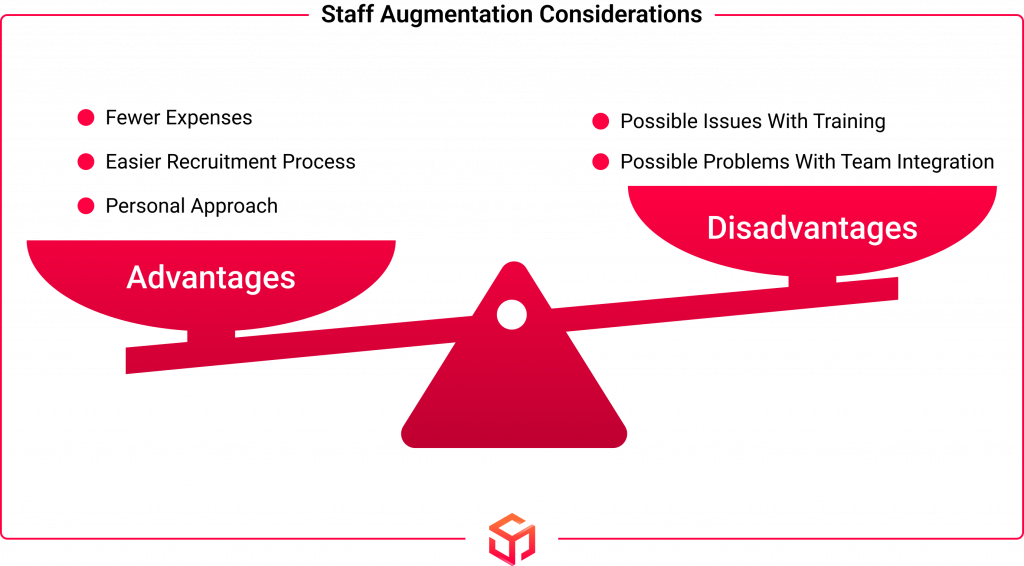 Pros of IT Staff Augmentation Services:
Pros of IT Staff Augmentation Services:
- Access to specialised expertise: It allows organisations to access skilled developers with specific knowledge and expertise for complex projects.
- Flexibility: Companies can quickly scale their IT workforce based on project needs without the long-term commitment of hiring full-time employees.
- Cost-effectiveness: It eliminates recruitment and training costs, allowing organisations to engage developers on a temporary basis, resulting in potential cost savings.
- Reduced time to hire: IT staff augmentation services have pre-screened qualified developers, reducing the time it takes to find suitable candidates.
Cons of IT Staff Augmentation Services:
- Limited control over resources: Augmented staff may have less day-to-day control compared to in-house employees, requiring strong collaboration and communication.
- Potential integration challenges: Integrating augmented staff and aligning them with goals and culture may pose challenges, requiring effective on boarding and clear expectations.
- Dependency on external providers: Relying on third-party providers for IT needs can pose risks and require careful selection of reputable service providers.
- Limited long-term commitment: augmentation may not be suitable for long-term projects or consistently dedicated resources, as it lacks continuity and stability.
What is IT Outsourcing Services?
IT outsourcing services involve contracting an outside company to handle some or all of your IT needs. Rather than hiring full-time staff, your business pays an IT outsourcing firm to manage IT functions. This allows you to scale IT resources up or down as needed without the commitment of permanent hires.
Some common IT functions that are often outsourced include
- Help desk and technical support
- Software development
- Web development
- Database Administration
- Cybersecurity and information security
- Cloud computing services
Pros & Cons of IT Outsourcing Services
Here are the advantages and disadvantages that can help you understand the service and how it suits your business.
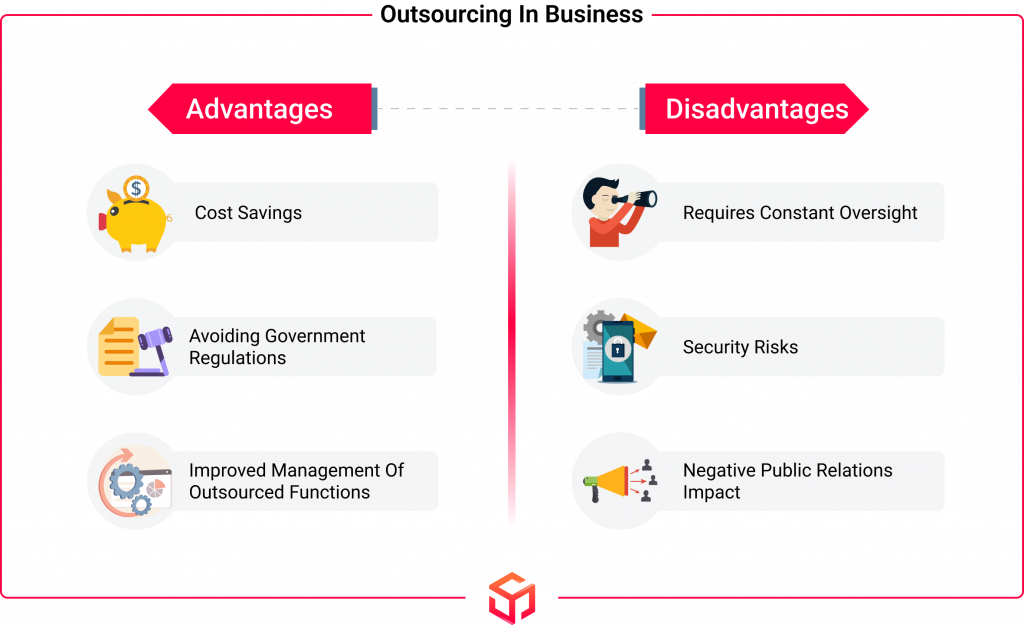 Pros of IT Outsourcing Services:
Pros of IT Outsourcing Services:
- Enhanced efficiency: It allows organizations to optimize IT operations and processes, leading to increased efficiency and productivity.
- Access to advanced technologies: Outsourcing providers often have access to the latest technologies and infrastructure, enabling organizations to leverage cutting-edge solutions without significant investments.
- Round-the-clock support: It often offers 24/7 support, ensuring that IT issues can be addressed promptly, minimizing downtime, and maintaining business continuity.
- Global talent pool: It offers access to a global talent pool, allowing organizations to source developers from different geographical locations, expanding the potential talent pool and diversity of skills.
Cons of IT Outsourcing Services:
- Vendor management complexity: Managing relationships and coordinating activities with multiple outsourcing vendors can be challenging, requiring effective vendor management practices.
- Potential cultural and language barriers: Working with outsourcing providers from different countries can introduce cultural and language barriers that may affect communication and understanding.
- Hidden costs: While outsourcing can provide cost savings, there can also be unexpected costs associated with contract management, service-level agreements, and transitioning between providers.
- Risk of intellectual property concerns: Sharing intellectual property and proprietary information with external providers raises the risk of data breaches, copyright infringement, or leakage of sensitive information.
IT Staff Augmentation vs. IT Outsourcing:
Let’s see the difference between IT Outsourcing vs. IT Staff Augmentation in a tabular column for a better understanding.
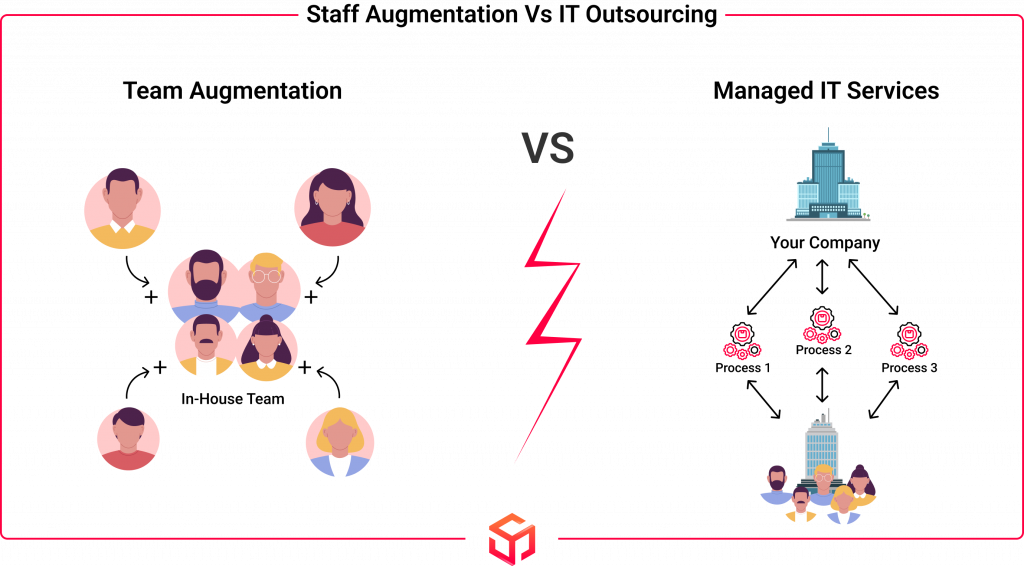
| Aspect | IT Staff Augmentation | IT Outsourcing |
| Definition | Augmenting in-house IT teams with external developers who work alongside existing staff. | Hiring an external organization to handle specific IT functions or projects. |
| Control and Management | The in-house team retains control and manages the augmented staff directly. | The external vendor takes control and management responsibilities for the outsourced functions. |
| Integration with In-House Team | Augmented staff work closely with the internal team and align with their processes. | Outsourced teams may work separately and may have different processes. |
| Flexibility | Offers flexibility to scale resources up or down based on project needs. | Often provides less flexibility as the outsourced vendor has fixed agreements. |
| Expertise and Skillset | Allows access to specific skills and expertise required for a project. | Typically offers a broader range of IT skills and expertise within the vendor organization. |
| Cost Control | Costs can be more transparent and directly managed by the organization. | Costs may be fixed or more difficult to control, with less transparency. |
| Project Focus | Ideal for short-term projects or addressing skill gaps in the in-house team. | Suitable for long-term or ongoing functions that don’t require constant in-house attention. |
| Accountability | The In-house team is directly responsible for the results and project success. | The outsourcing vendor is accountable for delivering the agreed-upon services. |
| Communication | Direct and easy communication between in-house and augmented staff. | Communication may involve intermediaries, potentially leading to delays or miscommunications. |
| Security and Compliance | Easier to enforce internal security and compliance standards. | Vendor responsible for adhering to agreed-upon security and compliance standards. |
| Risks and Challenges | Potential challenges include managing external staff and their integration. | Risks include potential loss of control, quality issues, and cultural differences. |
| Vendor Selection | Hiring and onboarding external developers on a case-by-case basis. | Selecting and contracting an outsourcing vendor through a formal procurement process. |
| Scalability | Easy to scale resources as needed for different projects. | Scalability may be constrained by contractual agreements with the vendor. |
| Time to Implement | Faster implementation as it involves hiring individuals or small teams. | May take longer to set up an outsourcing agreement, including legal and contractual aspects. |
| Quality Control | Direct control over the quality of work and can implement changes as needed. | Quality control may require monitoring and managing the vendor’s performance. |
| Location of Resources | Augmented staff can work on-site or remotely, depending on the project. | Outsourcing can involve offshoring, nearshoring, or onshore teams based on the vendor’s location. |
| In-House Resources | In-house teams may need to dedicate time to manage augmented staff. | Requires fewer in-house resources for day-to-day management. |
| Cost Structure | Cost structure is typically more transparent and can be tailored to project needs. | Cost structure may involve fixed fees or more complex pricing models. |
| Strategic Alignment | More suitable for aligning with specific project goals and immediate needs. | Better for aligning with long-term business strategies and consistent support. |
Improve Efficiency With Dedicated Offshore IT Teams
Offshore developers allow you to build a dedicated team of IT experts to improve efficiency. Hiring offshore developers typically costs a fraction of onshore teams. Paying lower wages means major cost savings that impact your bottom line.
- Round-the-Clock Productivity- With teams in different time zones, work can continue 24 hours a day. Developers hand off tasks between shifts, accelerating project timelines.
- Access to Scarce Skills – Certain tech skills are hard to find locally. Tapping into the global talent pool gives you access to niche areas of expertise. Offshore teams often have strong backgrounds in areas like software engineering, web development, and mobile app creation.
- Scalability – It’s easy to scale offshore teams up or down as needed. You can start small, and then add additional developers to ramp up for new projects or product releases. When demand slows, scale back down without penalty.
- Cultural Diversity – Working with offshore developers introduces cultural diversity that provides valuable global perspectives. Different viewpoints and experiences lead to more innovative solutions.
What to Choose for Your Project? - Factors to Consider
When deciding between IT outsourcing vs IT staff augmentation, several factors should be considered:
Company size and budget:
The financial resources and size of your company can influence the decision. IT outsourcing may be more cost-effective for small to medium-sized businesses with limited budgets, as it reduces the need for maintaining and hiring dedicated developers. On the other hand, larger companies with sufficient resources might opt for IT staff augmentation to have more control over their IT projects.
Nature and scope of the IT project:
The complexity, duration, and specific requirements play a crucial role. If the project requires specialized skills and expertise that are not readily available in-house, IT outsourcing may be a better choice. However, if the project is well-defined and aligns with the existing skillset of your internal IT team, IT staff augmentation can provide the necessary support.
Long-term vs. short-term needs:
Consider whether your IT needs are short-term or long-term. If the requirements are temporary or sporadic, IT outsourcing can provide flexibility and scalability without the need for long-term commitments. On the other hand, for ongoing or strategic projects that need continuous support, IT staff augmentation allows you to maintain control and retain knowledge within your organization.
Level of internal expertise and resources:
Evaluate the level of expertise and resources available internally. If your internal IT team lacks the necessary skills or experience for a particular project, IT outsourcing can bring in specialized expertise. Alternatively, if you have a capable IT team that can benefit from additional skilled developers, IT staff augmentation can supplement their capabilities.
Business objectives and strategic planning:
Consider your business objectives and long-term strategic planning. IT outsourcing can help you focus on core business objectives by delegating IT functions to external experts. IT staff augmentation, on the other hand, allows you to retain control and align IT efforts directly with your overall strategic goals.
It is essential to carefully weigh these factors and consider the specific requirements and circumstances of your company before making a decision.
Conclusion
So there you have it, when deciding between IT outsourcing vs IT staff augmentation, consider your priorities and goals. Conduct thorough evaluations, check references, and find a good culture fit. When you are considering either augmenting staff or outsourcing, Soft Suave is your reliable partner for any IT solutions. Reach us out to get the help you need and let us help you take your business to the next level. We are experts in the field and can provide you with the best solution for your needs

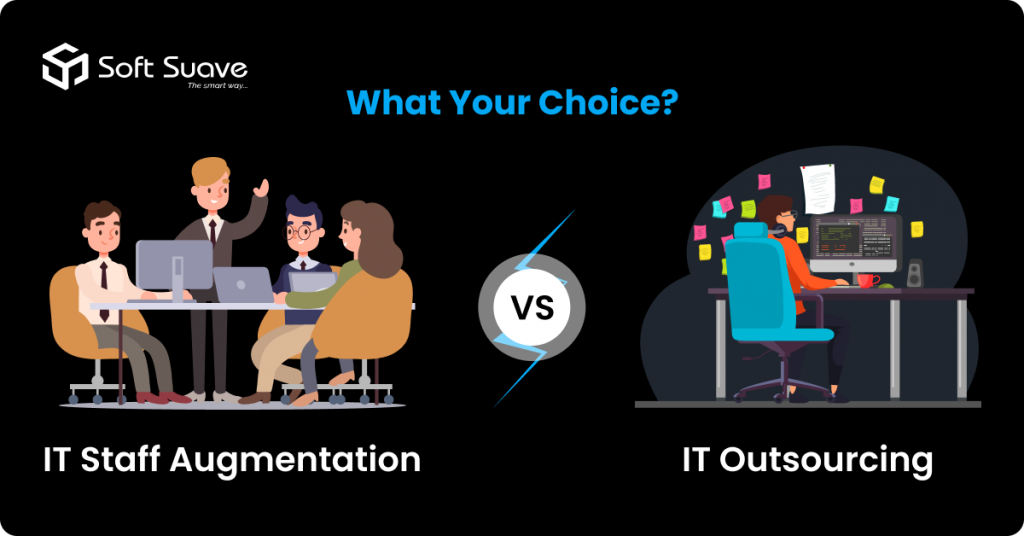





 8 Years of experience
8 Years of experience
